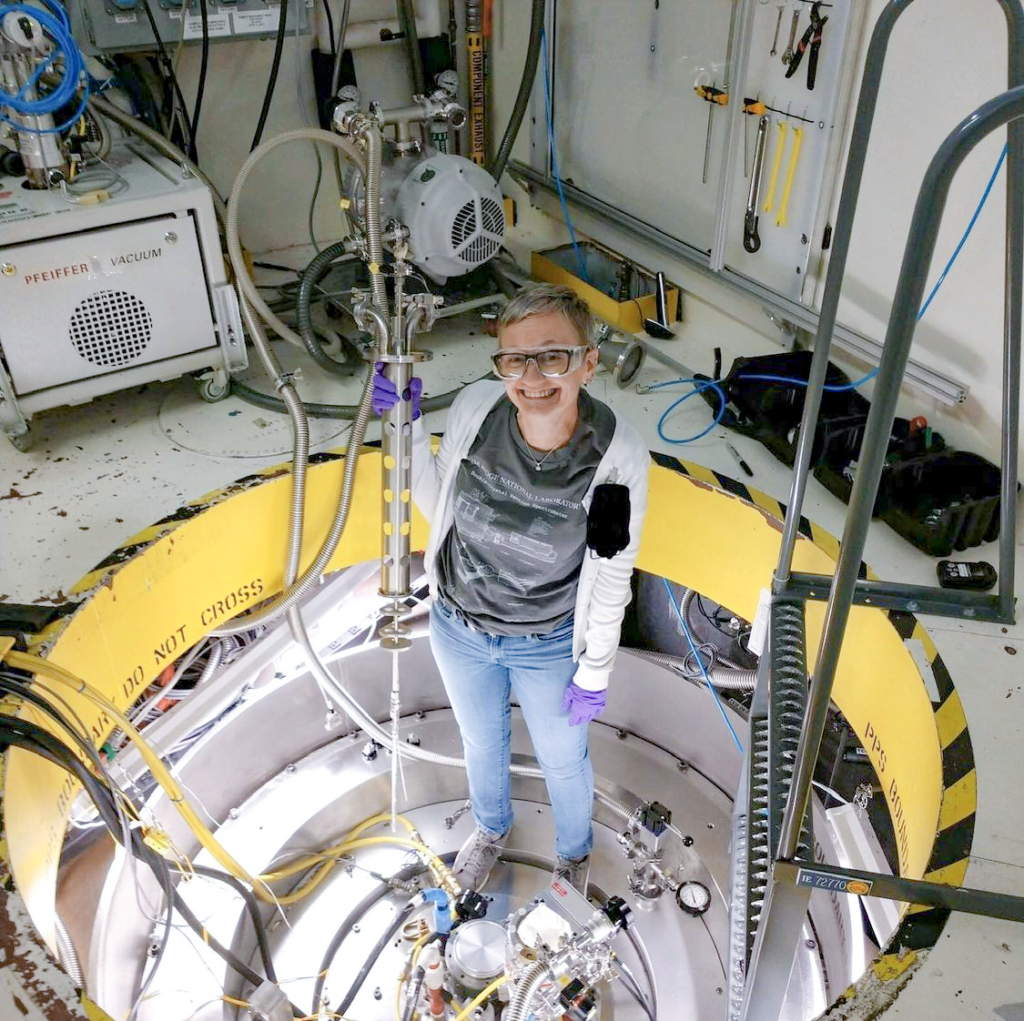by Laura Tenpenny
Michelle Everett left UT after her bachelor’s degree sure of one thing – she didn’t want to be a lawyer. After her LSAT exam, she stood in Neyland Stadium’s shadow on a heaving game-day street overwhelmed by the realization and the thousands of football fans. It was 12 years before she returned to her alma mater.
“I went back to UT after years in food service,” said Everett. “With a major in math and Latin and a love of sci-fi and Star Trek, aerospace engineering seemed a good fit.”
Enter Materials Science Engineering 201, a required course for Everett taught by Claudia Rawn, associate professor and director of the Center for Materials Processing.
“I was so excited to learn about atoms hanging out with each other and how it changes material properties. Amazing!” recalled Everett.
A partnership with Rawn as her graduate advisor and an equally vital partnership between UT and Oak Ridge National Laboratory paved the path to a career in materials science engineering, in which she has a master’s (2009) and PhD (2013).
“Claudia encouraged me to join things, go to conferences, and meet people,” said Everett. “And her joint faculty position meant opportunities to do work at ORNL.”
“I got to assist in a postdoctorate’s research doing X-ray analysis. I also worked with Claudia at ORNL on neutron scattering experiments for the first time. That ORNL connection was invaluable, because I got to be hands-on with the equipment.”
Everett currently works as a scientific associate at ORNL’s Spallation Neutron Source, assisting users in experiments implementing a variety of equipment.
“Years of working tables and customer service come in handy,” said Everett. “I have to understand what a user needs. My strong crystallographic background from UT is also a huge leg up to understand both sides of the instrument—the science side and the operations.”
It was also Rawn who suggested she pursue an operations rather than a research path.
“She told me about a physicist who explained the difference like this: with operations, you get to make science happen and see all sorts of discoveries, but with research, you’re often centered on learning everything about just this tiny niche,” said Everett. “That spoke to me.”
Everett and the SNS help researchers study material properties of everything from medicine to bridges to batteries. Recently, the SNS assisted in the discovery of alternative materials that can improve the life of lithium batteries, which power devices from tablets to electric cars.
“This is a very basic explanation, but many of the instruments at the SNS act like a magnifying glass for understanding atomic structures,” said Everett. “We use neutrons like a microscope.”
Speaking with Everett about her work and the part she gets to play in such research and discoveries, it’s easy to see how much it charges her up (particle pun intended). Much like a microscope, Everett’s UT experience helped her see a more compelling future.
